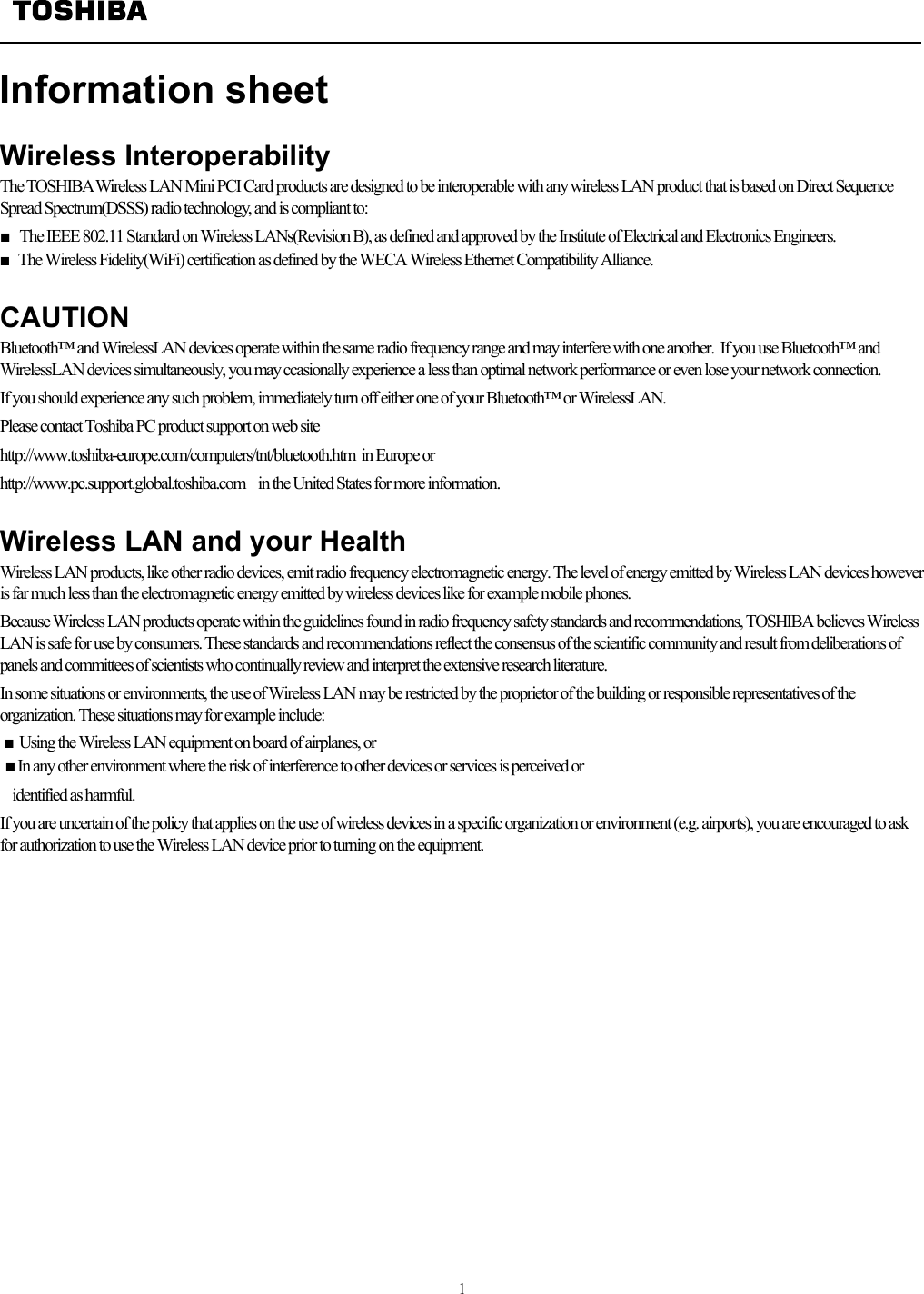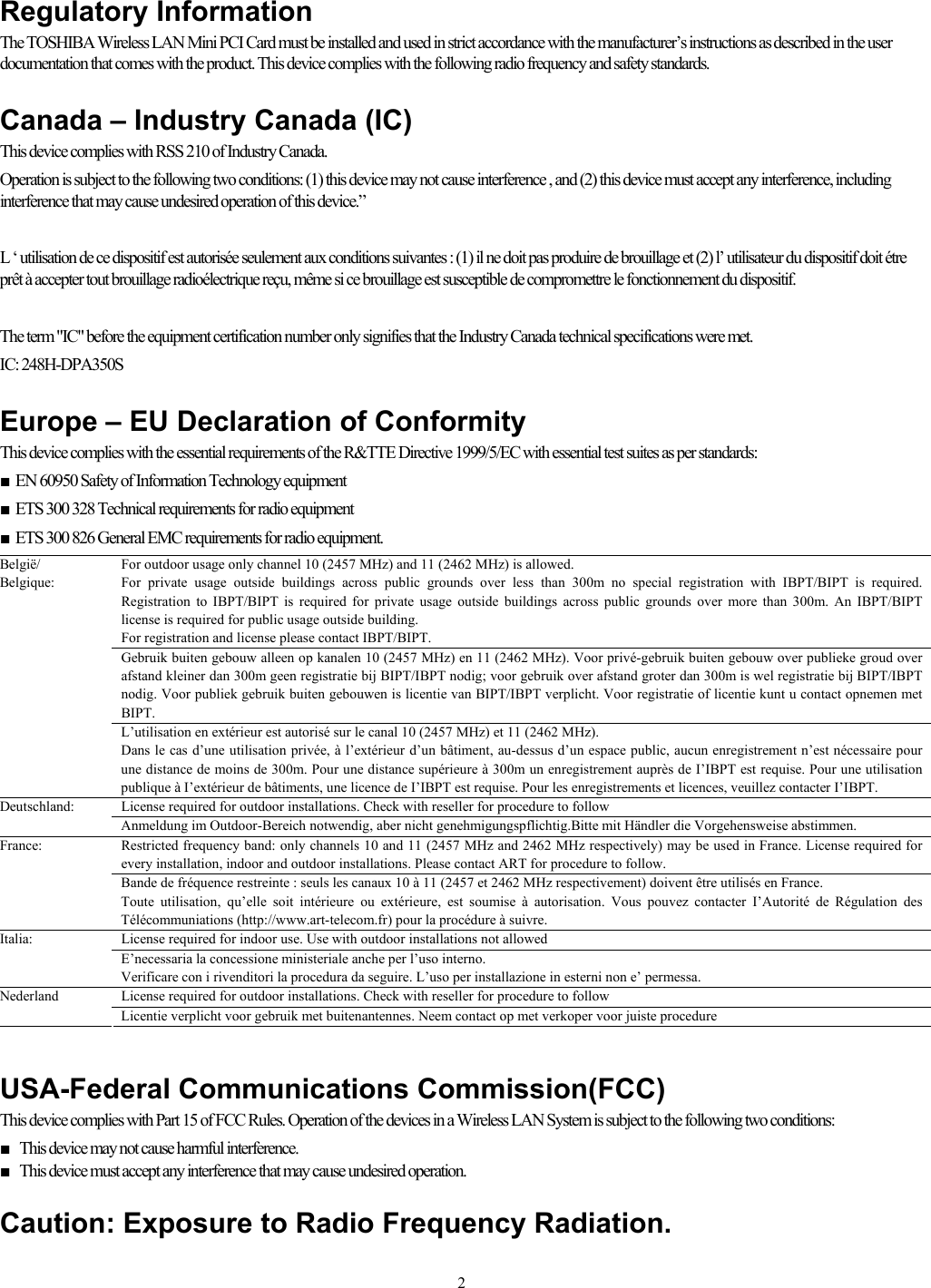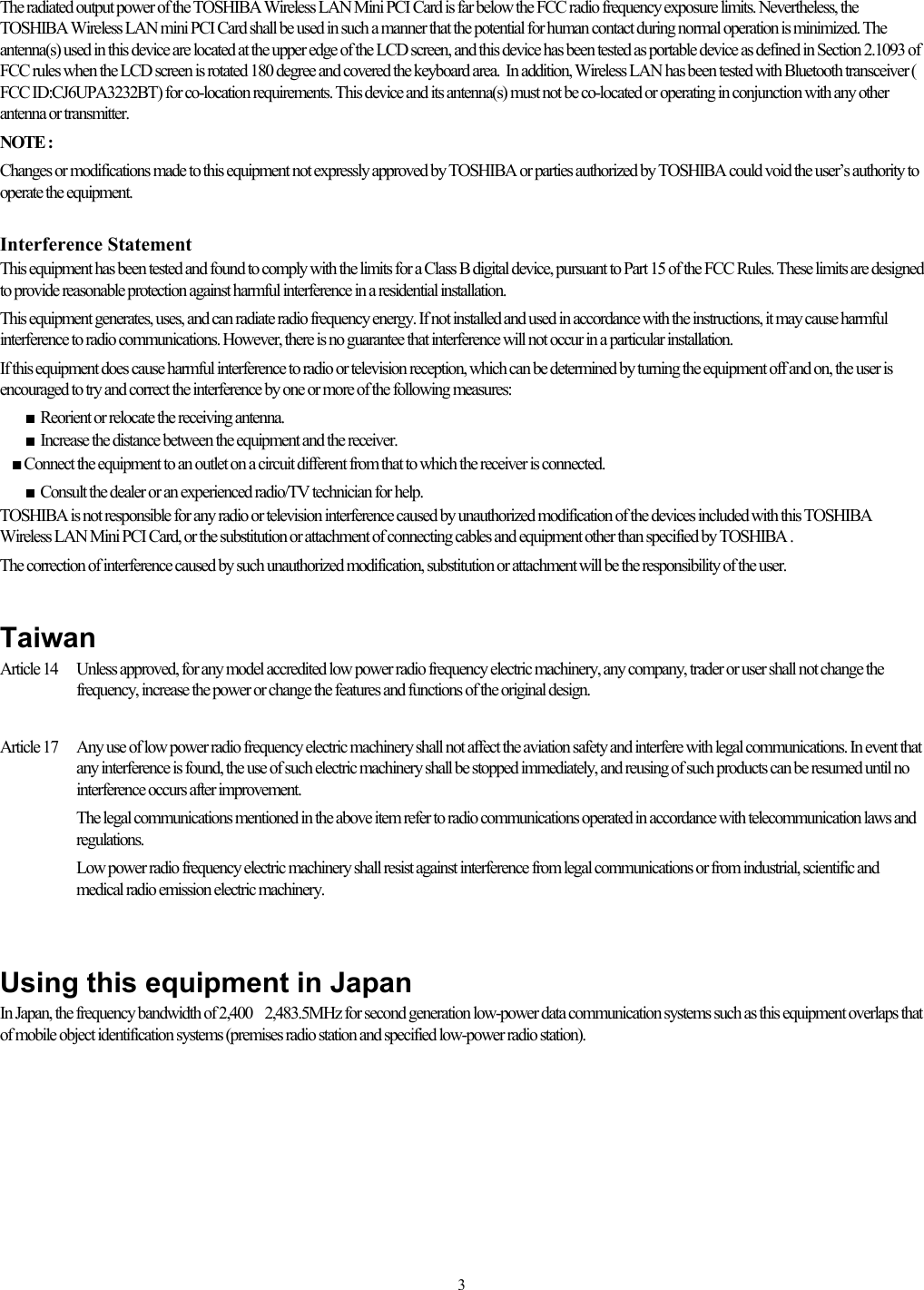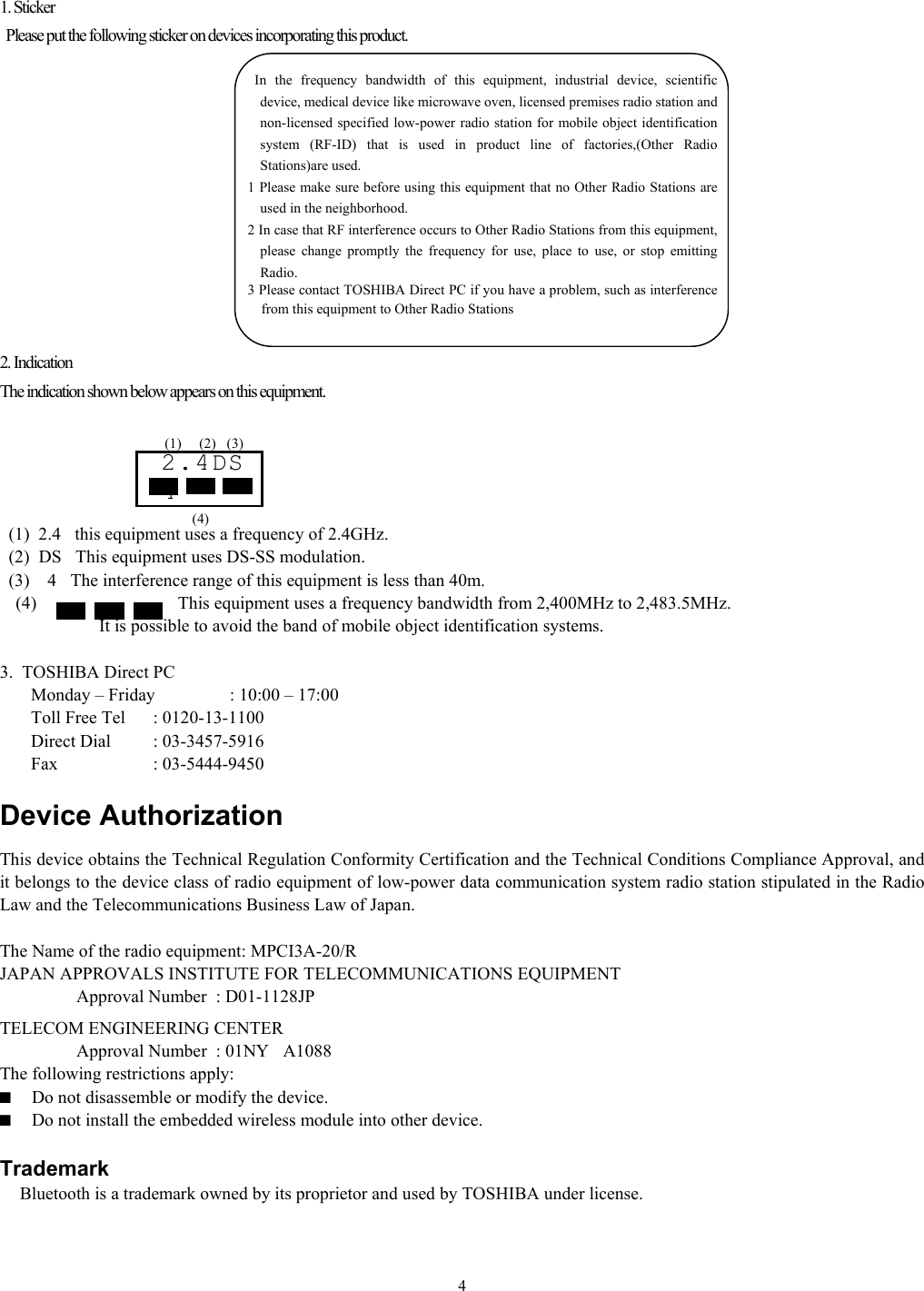Dynabook UPP350SY Notebook PC with Bluetooth and WLAN. Portégé 3500 User Manual 277664
Toshiba Corporation Notebook PC with Bluetooth and WLAN. Portégé 3500 277664
Dynabook >
Contents
- 1. User Manual
- 2. BT portion of user manual with RF warning statement
- 3. WLAN portion of user manual with RF exposure warning statement
- 4. Notebook Computer User Manual
WLAN portion of user manual with RF exposure warning statement



